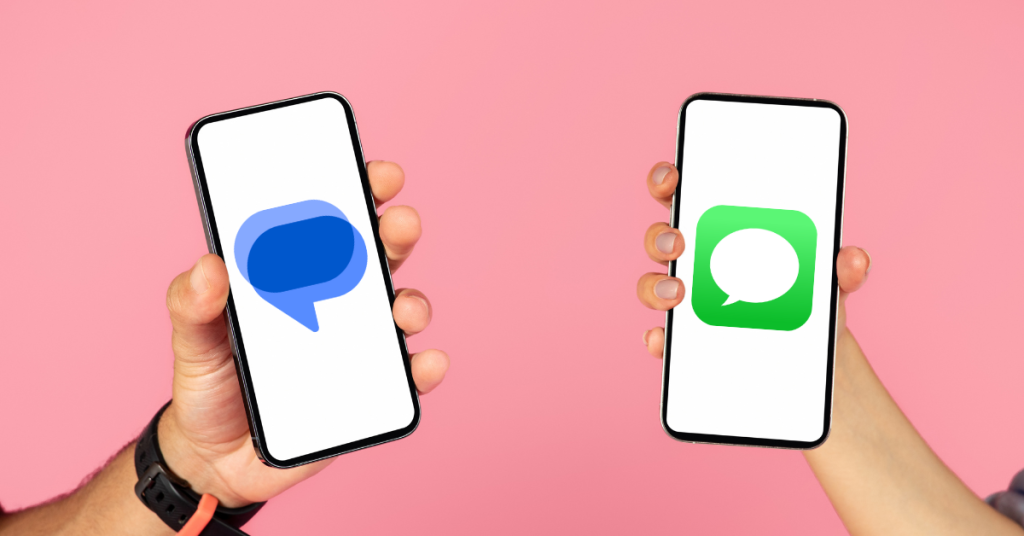
There has been a lot of politics at play between Apple and Google when it comes to messaging. The Cupertino giant used to stick with their iMessage and Apple Messages for Business (AMB), while Google was widely promoting the new Rich Communication Services (RCS) standard together with RCS Business Messaging (RBM).
Recently, however, Apple finally decided to introduce RCS to their devices. Does it mean that the sunset of Apple Messages is near? And what is the difference between the two types of messages, anyway? Let’s check it out.
Similar outcome, dissimilar background
If I send “Hi!” to two of my friends, one with an iPhone and another with an Android device, the messages would look pretty much the same for the end user – no surprise there.
By definition, they seem almost interchangeable – Apple Messages enable you to send different types of complex content. On the other side, RCS has “rich” in its name, implying that it can do the same.
In truth, they have a lot of similarities, like rich media, suggestions or lists, reactions, and more. However, they are also two different standards with two different sets of features.
Different destination
The most notable difference for businesses is that the destination for an Apple Message for business is not an MSISDN number -it’s the user’s Apple ID.
This doesn’t concern you if you’re just messaging friends, but if you represent a business targeting your clients, the difference is huge. Businesses cannot send an Apple Message e to a phone number. The client must initiate the conversation, and your business knows only the special ID that refers to the conversation – not the client number.
That has some benefits for end users, like preventing spammers from filling your inbox with unwanted content. It should be noted that RCS has its own methods of battling spam, like verified sender, but regardless of whether the business is verified or not – it can spam.
You can send a message to an iPhone using just a phone number, but it will appear as a green bubble – an SMS. Apple has not yet revealed what that will look like once RCS is adopted.

Payments
Apple has also made a lot of effort to integrate Apple Message with their ecosystem. In Apple Messages for Business, there is native support for Apple Pay, which makes a lot of difference when it comes to business messaging.
Meta is now trying to rival that with WhatsApp Payments but with significant effort. It would not be so easy to offer a worldwide, open, and secure standard of payments in RCS.
Authentication
Another example is authentication flow with OAuth2 – the standard designed to allow a website or application to access resources hosted by other web apps on behalf of a user.
While it has been present in iPhones for a while now, the standard is still not supported in RCS. Implementation of such close communication between the messaging app and the OS seems on Android to have more complexities and takes more time.
Why is it a big deal, anyway?
It may seem that Apple Messages have an upper hand in this comparison, so why is it such a big deal that Apple will be adopting RCS?
It’s really the unification of Apple and Android messaging that is so important for the industry.
This is not only about having platform-agnostic group chats or having the same set of reactions. For business messaging, this is a sharp turn from the way most business messaging is mostly used now, like exchanging short texts with updates and promotions. Shopping, paying, or voting via messages is something we might see very soon.
But will the user experience and functionality of messaging apps ever be the same in Android and iOS? We will see in due time. Personally, I don’t think that Apple could reduce the plans just stick to the existing standard. Let’s see what they have in store!
